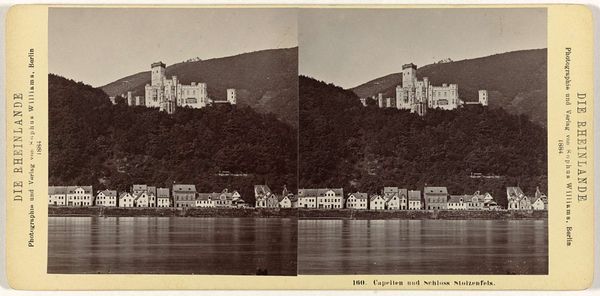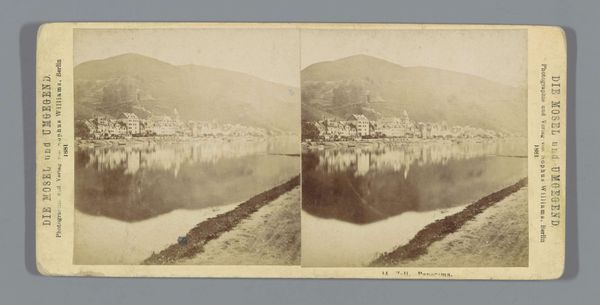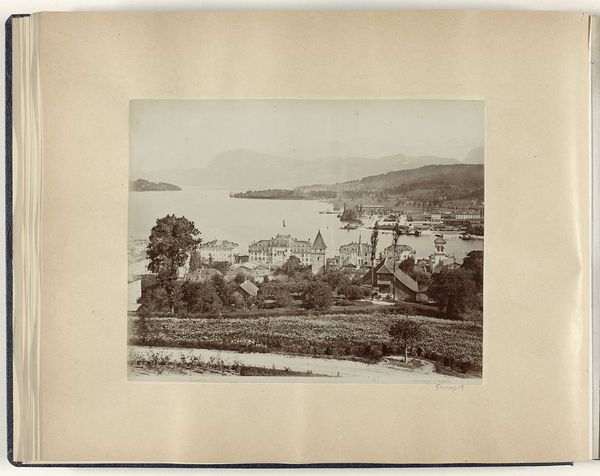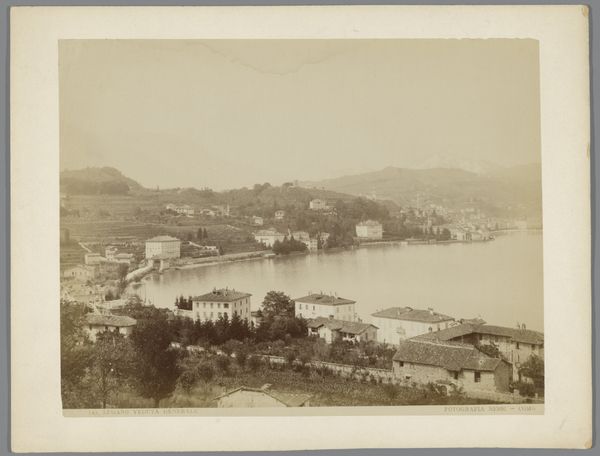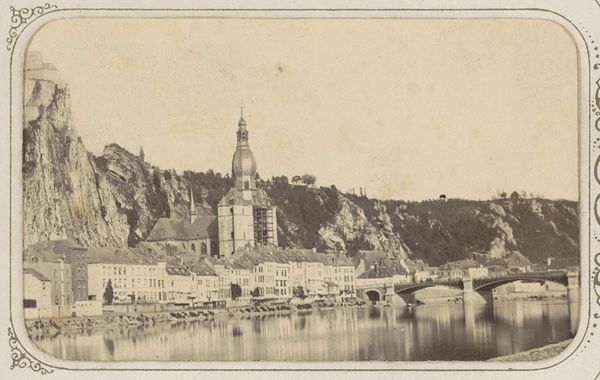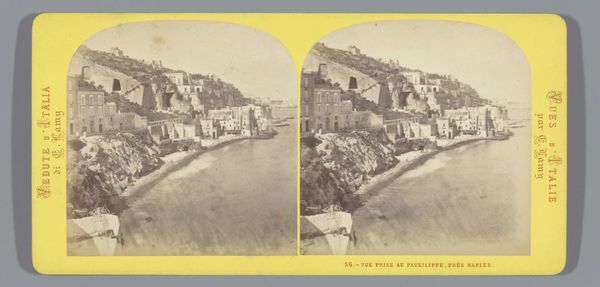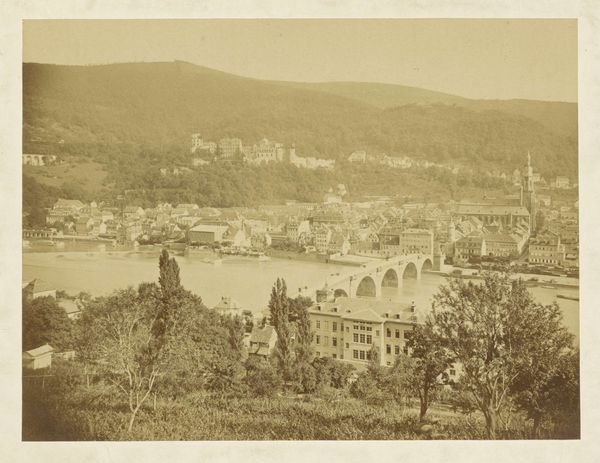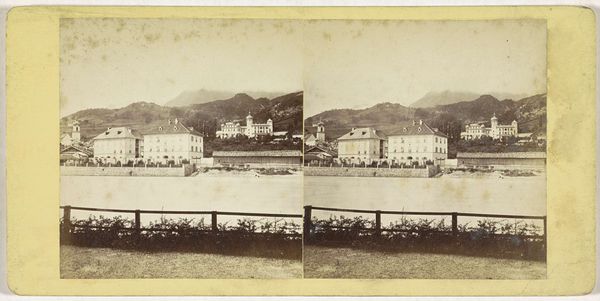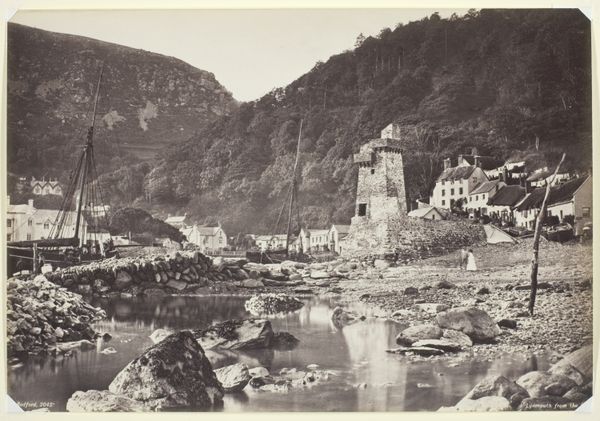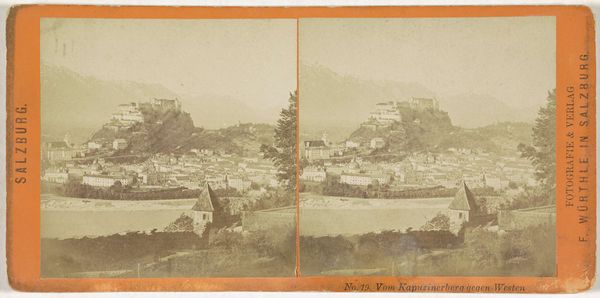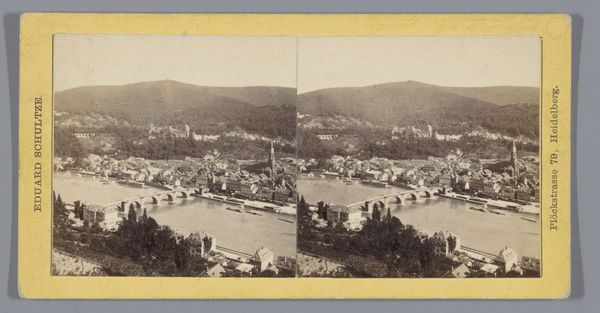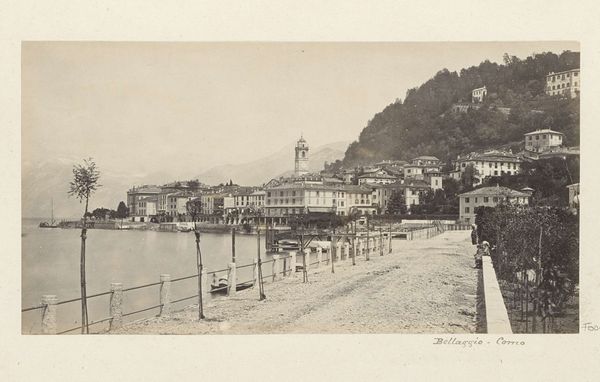
photography
#
landscape
#
photography
#
cityscape
Dimensions: height 86 mm, width 177 mm
Copyright: Rijks Museum: Open Domain
Curator: This is an 1881 photograph, "Gezicht op Cochem en de rijksburcht," or "View of Cochem and the Imperial Castle," by Sophus Williams. It's interesting how photography, at this point, engages with notions of representing place. What are your first impressions? Editor: I’m immediately struck by the way the castle dominates the landscape. It’s perched so prominently above the town. It feels almost like it’s watching over everything. What was the purpose of creating these kinds of cityscape photographs back then? Curator: Good question. Photography became a popular tool for documentation and dissemination. Consider who was buying these images and what they wanted to see. Was it about capturing an 'authentic' view, a romantic vision of the past, or something else? Stereoscopic views like this one provided a heightened sense of reality. They were hugely popular as collectables, fueling a booming tourism industry. Did this representation encourage a kind of nostalgia or national pride? Editor: So, it's not just a picture; it's actively shaping how people see Cochem and, perhaps, Germany itself. The clean lines and organised composition definitely seem designed to evoke a sense of order and strength. How do you think the choice of a castle reflects those political agendas? Curator: Castles like the Reichsburg often stand as symbols of power, history, and national identity. Rebuilding ruined castles was a phenomenon throughout 19th-century Europe, intended to promote national consciousness and identity. Images like this reinforced the idea of a strong, historically rooted German nation, even if that reality was more complex. Editor: That’s fascinating! I never considered how even a simple landscape photo could be loaded with so much political meaning. Curator: Exactly. It shows us that photographs aren't neutral documents but crafted representations deeply embedded in the social and political landscape of their time. Looking closely allows us to think critically about the intentions and the audience for this photograph. Editor: This really opens my eyes to how images of places can play a crucial role in shaping our understanding of history and national identity.
Comments
No comments
Be the first to comment and join the conversation on the ultimate creative platform.
